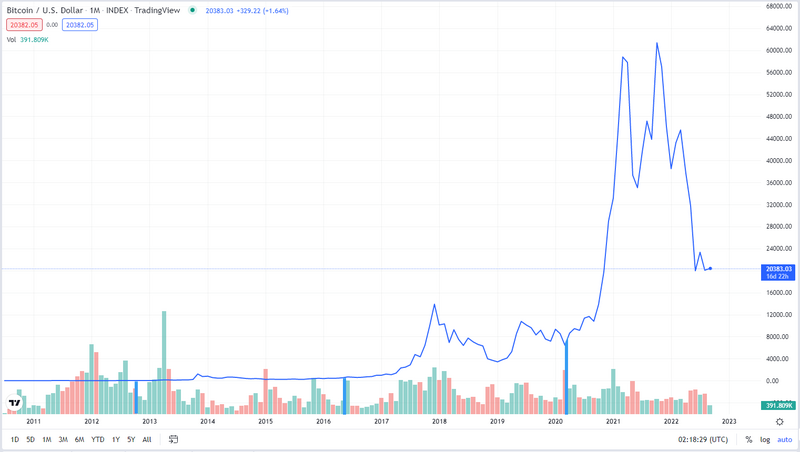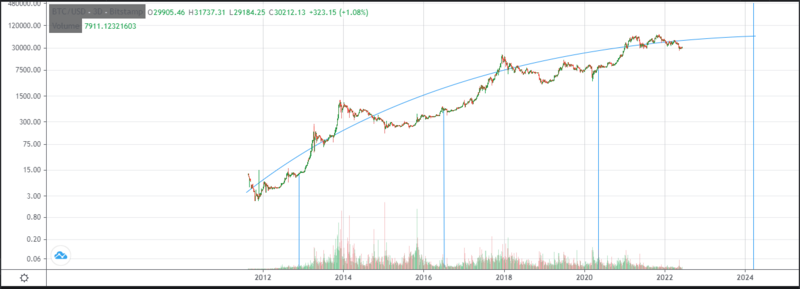Background: Difference between revisions
No edit summary |
No edit summary |
||
| (12 intermediate revisions by the same user not shown) | |||
| Line 1: | Line 1: | ||
In construction... | |||
[[File: | [[File:SeasonalTokens Banner 4 XSM4.png|1000px]] | ||
[[ File:Btc icon.png |200px |left]] | |||
Seasonal Tokens design is based on key observations about the way Bitcoin evolved over time. Therefore we need some understanding of Bitcoin to fully appreciate the design principles behind Seasonal Tokens. Check out this [[Bitcoin Design | Bitcoin]] summary of ideas that influenced Seasonal Tokens design. | |||
Basically, the mean feature borrowed from Bitcoin's design is the use of proof of work. In Bitcoin PoW is used in the consensus mechanism for keeping the distributed database. But it goes beyond that, in fact PoW solves many problems at once as described in the [[Bitcoin Design | Bitcoin]] page. | |||
Proof of Work mining is necessary for Seasonal Tokens design, because it gives a real cost of production for the tokens (together with ETH minting fees). This is what anchors the token's prices to the real economy, and it is the handle that allows the relative token's prices to oscillate around each other. | |||
Seasonal Tokens | The halving of mining supply every 3 years in Seasonal Tokens (every 4 years in Bitcoin) also is a way to have an absolute maximum number of tokens produced. | ||
The | The fact that there is a finite number of bitcoins is a necessary condition to make it so valuable. This digital asset is not subject to inflation. Nobody can produce Bitcoin out of thin air de-valuating the asset. | ||
=The Halving of Mining Supply puts Upward Pressure on Bitcoin's Price= | |||
The key observation that led to the creation of Seasonal Tokens can be seen in the following chart. It shows the historical Bitcoin's price. The blue vertical lines mark the dates when the mining supply of bitcoin was cut in half. | |||
[[ File:BTC price TV01.PNG |800px |left]] | |||
As you can appreciate, there is nothing particularly enlightening about this graph. It is hard to see the effect of the halving of the mining supply. The price changes are so large that the information is lost in the details of price fluctuations. | |||
If we look at the graph on a logarithmic scale, we can concentrate on the order of magnitude changes, paying less attention to the random fluctuations in the price. Then a pattern emerges: | |||
[[ File:Bitcoin price logarithmic.PNG |800px]] | |||
Months after the halving of the mining supply a bull market sends the Bitcoin price to all-time highs, this bull market sends the price way above its cost of production and the whole thing ends up with a price bubble leading to a bear market that may last for years until the next halving occurs. | |||
[[ File:Ethereum.png |300px]] | [[ File:Ethereum.png |300px]] | ||
[[File:ST logo 3D02.png|300px |left]] | |||
[[Autumn Halving | Autumn Halving]] | |||
Latest revision as of 22:23, 24 October 2023
In construction...
Seasonal Tokens design is based on key observations about the way Bitcoin evolved over time. Therefore we need some understanding of Bitcoin to fully appreciate the design principles behind Seasonal Tokens. Check out this Bitcoin summary of ideas that influenced Seasonal Tokens design.
Basically, the mean feature borrowed from Bitcoin's design is the use of proof of work. In Bitcoin PoW is used in the consensus mechanism for keeping the distributed database. But it goes beyond that, in fact PoW solves many problems at once as described in the Bitcoin page.
Proof of Work mining is necessary for Seasonal Tokens design, because it gives a real cost of production for the tokens (together with ETH minting fees). This is what anchors the token's prices to the real economy, and it is the handle that allows the relative token's prices to oscillate around each other.
The halving of mining supply every 3 years in Seasonal Tokens (every 4 years in Bitcoin) also is a way to have an absolute maximum number of tokens produced.
The fact that there is a finite number of bitcoins is a necessary condition to make it so valuable. This digital asset is not subject to inflation. Nobody can produce Bitcoin out of thin air de-valuating the asset.
The Halving of Mining Supply puts Upward Pressure on Bitcoin's Price
The key observation that led to the creation of Seasonal Tokens can be seen in the following chart. It shows the historical Bitcoin's price. The blue vertical lines mark the dates when the mining supply of bitcoin was cut in half.
As you can appreciate, there is nothing particularly enlightening about this graph. It is hard to see the effect of the halving of the mining supply. The price changes are so large that the information is lost in the details of price fluctuations.
If we look at the graph on a logarithmic scale, we can concentrate on the order of magnitude changes, paying less attention to the random fluctuations in the price. Then a pattern emerges:
Months after the halving of the mining supply a bull market sends the Bitcoin price to all-time highs, this bull market sends the price way above its cost of production and the whole thing ends up with a price bubble leading to a bear market that may last for years until the next halving occurs.




